April 10, 2025
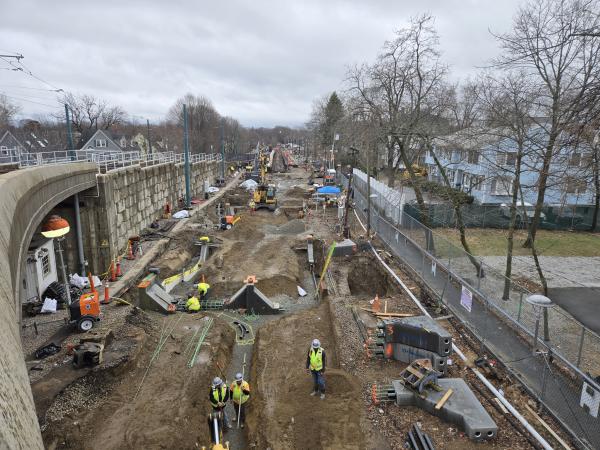
Contractors and T workers are shown at work on a key section of tracks just beyond Ashmont station known as the “diamond crossover”— a complicated switch that has been in disrepair and needs to be totally replaced. MBTA photo
The shuttle buses are off the avenue and the trains are back on the rails today on the Ashmont branch of the Red Line after a nine day “surge” that MBTA general manager Phil Eng said “went extremely well.”
“We’re pleased with the focus our team has building off last year’s successful work,” said Eng, who spoke to the Reporter on Thursday afternoon.
Rail service on the Dorchester leg of the Red Line was interrupted on April 1 through Wednesday, April 9 to allow for round-the-clock repairs focused on the right-of-way, bridges, signal upgrades, and other improvements that are hazardous— or impossible— to conduct when the trains are running.
Coach buses operated by the Yankee Line replaced the trains until the opening of service today, an inconvenience for riders and other commuters who had to share Dot Ave. Adams Street, Columbia Road, and other snarled roadways with the buses over the last week and two days.
Like two earlier service suspensions on the Ashmont branch, Eng says that the pay-off will be apparent over time to the riding public in the form of shorter wait times, speedier trips, and better safety conditions for everyone, including T workers.
“What we’re building for is longer term success,” Eng said.
Trains are back on-line today, but frequent Red Line passengers will still have to endure longer trips and waits through the end of this month. That’s due to the ongoing use of “shuttle trains” on the Ashmont branch— meaning that a single track will be used to shuttle riders back and forth between JFK-UMass and Ashmont— with one track reserved for “express service” between the two hubs and another used for “local” stops like Shawmut and Fields Corner.
The result: Longer-than-usual trips for some and the need for everyone to get off and change trains at JFK-UMass if they’re heading further in town.
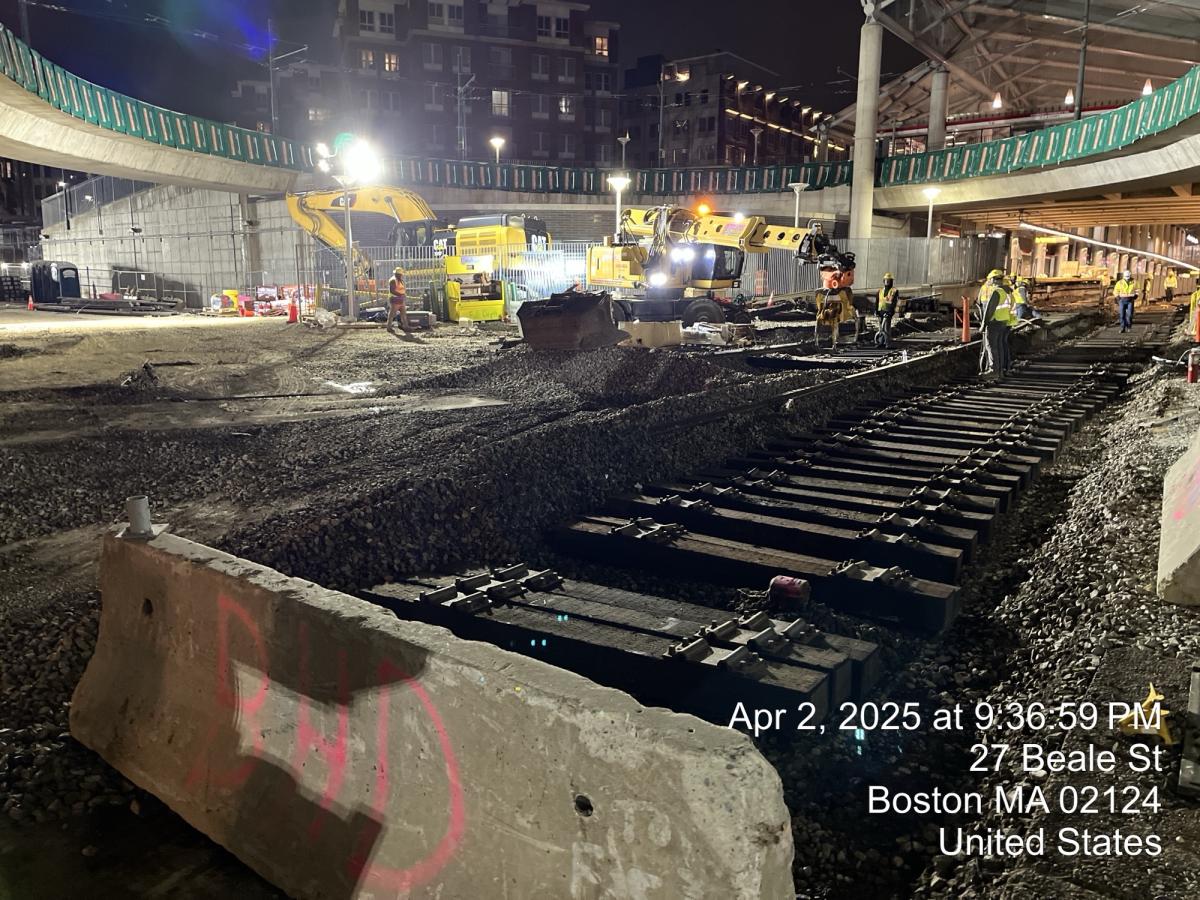
Above: Night-work near the Ashmont "loop" on April 2, 2025. MBTA photo
The “shuttles” — which have been in the plans all along—are needed to allow contractors and T workers additional time to fix a key section of tracks just beyond Ashmont station known as the “diamond crossover”— a complicated switch that has been in disrepair and needs to be totally replaced. That means removing a large section of inter-locking tracks and signals— and replacing them altogether in a timeline that will that weeks— rather than days— to complete.
Some other take-aways from this most recent T surge:
Two distinct contractors, along with vtrained T staff, have been deployed throughout the month to replace roughly 13,000 feet of rail. Eng noted that some of the work crews are full-time T employees who’ve been trained in “thermite welding,” a specialty skill that allows them to perform work that otherwise would have to be outsourced.
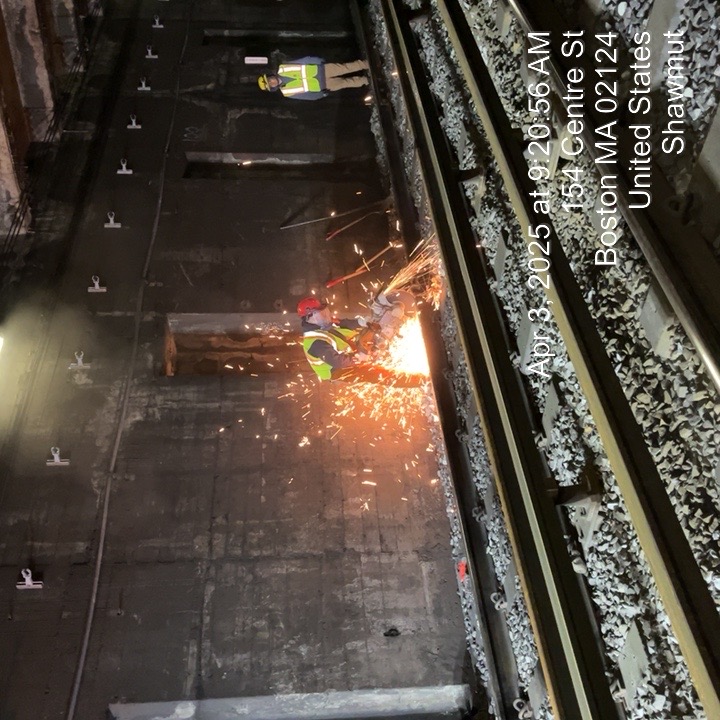
“It’s a skill-set that we’d lost,” said Eng, who said it’s part of his goal to “rebuild our workforce.”
“They take section of rail and make them continuous, allowing for a smoother trip, more reliable and safer.”
Three MBTA bridges in Fields Corner that cross Dorchester Avenue, Adams Street, and Geneva Avenue are also being repaired during this surge and the ongoing shuttle period. The work has been focused on making long overdue fixes to emergency walkways along the edges of the bridge that permit for safe passage for T workers and — in a pinch— passengers in the case of an emergency. The old walkways were rusted out, crumbling, and unsafe.
“Our workers are in the system all the time, so when we’re fixing the infrastructure, they need to know we’re doing things for them as well,” said Eng. “There’s a tremendous amount of debris, old rail, left in right of way that goes way back… as you’re trying to do work, it prevents them to safely easily walk the system without clutter.”
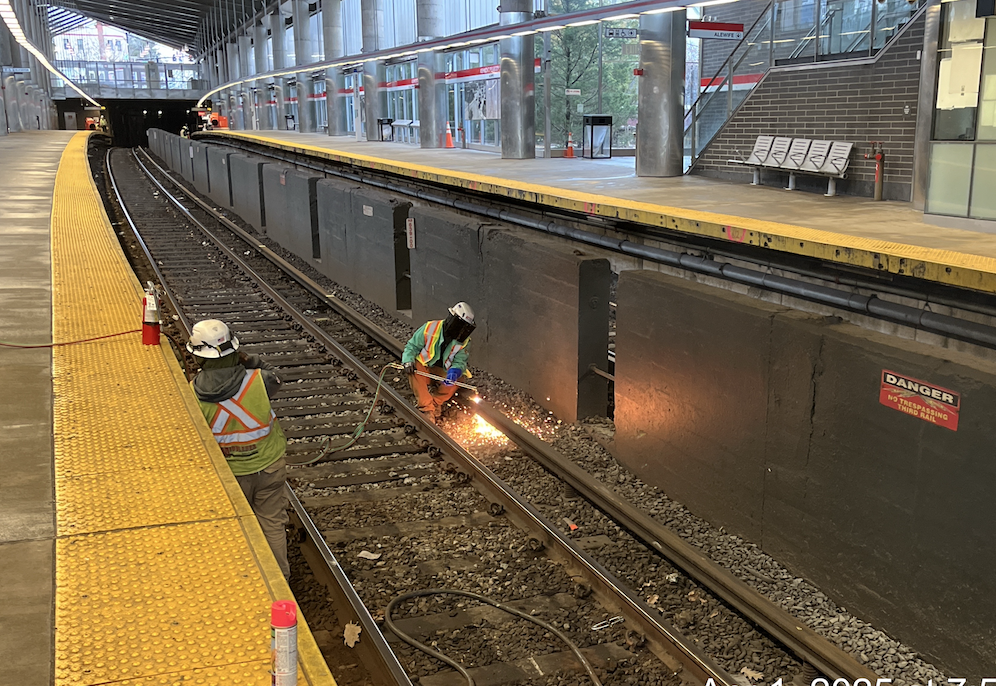
Above, workers weld tracks inside Ashmont station on April 1, 2025. MBTA photo
Passengers will likely notice other minor improvements too, like better lighting in places. There’s also fixes that won’t be readily apparent to the public like replacing an antiquated, analog signal system with a digitized, state-of-the-art system that Eng says will deliver a more reliable, safer, and faster experience over time.
“It’s really exciting,” said Eng who added: “Kudos to the governor for her proposed budget— and to the House for supporting it. We’re really optimistic.”
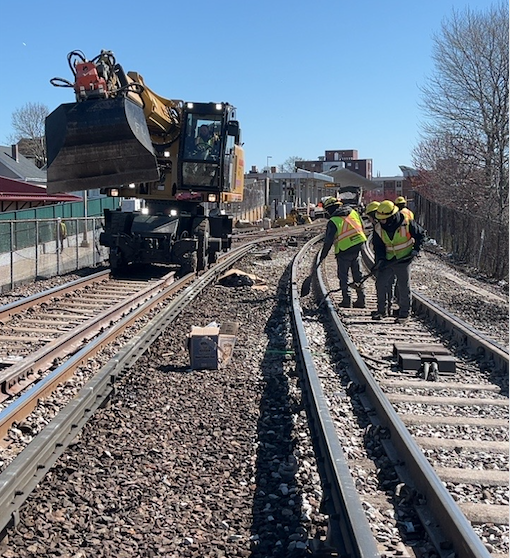
Workers on the right-of-way above Charles Street near Fields Corner on April 9, 2025. MBTA photo


